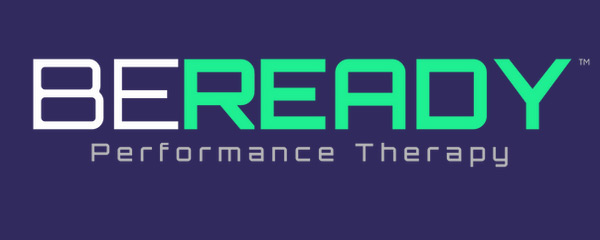Unfortunately, there are about 100,000 – 200,000 Anterior Cruciate Ligament (ACL) ruptures every year, many of these go on to be repaired by an orthopedic surgeon.
An ACL Tear is a serious knee injury and typically requires Reconstructive Surgery. ACL Reconstruction accounts for about 20% of all knee injuries in high school athletes. (Joseph Et al 2013) Most of these go on to have reconstruction surgery.
After a tear, many athletes go on to repair their ACL and begin what is typically a 9-12 month recovery process.
Before you have surgery though, there should be some prep work involved in not only getting your knee ready but also involved with choosing the right surgeon, the right ACL graft type, and choosing the most appropriate PT.
Choosing the right doctor.
Believe it or not, you get a choice in your surgeon and the PT you would like to see after rehab.
Would you rather have a surgeon that does only a few of these a year or 1000s of these a year? It seems rhetorical however many ACL reconstructions are done by surgeons who do less than 50 a year. (Kapoor, B. Et al.) Surgeon volume has been shown to be one of the biggest risk factors for surgical complications(Lyman, Stephen. Et. Al).
- What questions do you ask?
- How many of these surgeries have you done this year?
- Will I be in a knee brace after surgery and will I be able to put weight on my leg?
- What graft do you typically use?
- Do you typically recommend a hamstring graft or patellar tendon graft? Why?
- Do most of your patients return to normal activity and athletic activity?
- How long will my recovery be? When will I be able to return to sports?
There are so many questions to ask your surgeon, but these are some of the best ones to consider when asking.
What Graft Should You Choose?
The ACL is primarily responsible for preventing the shin bone from sliding forward on the thigh bone. These bands of tissue when ruptured cause knee pain, swelling, and difficulty having normal knee function.
There are several different types of grafts that can be used to perform Anterior Cruciate Ligament Reconstruction. The two most common types are where your surgeon will use either your hamstring for a hamstring graft or a portion of your patellar tendon for a patellar tendon graft.
Both of these types of grafts are very common and will vary from physician to physician. A good physician will help you determine what graft is best for you. This will depend on age, the health of your knee joint, whether you have a meniscus tear associated with it, and so much more.
The gold standard in Anterior Cruciate Ligament Reconstruction for most young athletic individuals is a patellar tendon graft. The strength of the patellar tendon graft is slightly better and the long-term risk of graft ruptures is between 1.9% and 6.6% compared to 4.9-17.5% for hamstring graft repairs (Buerba, Rafael MD. Et al.)
How Long is the Recovery After Surgery?
In the early phases of ACL Rehab, you may have knee swelling and pain. This is completely normal and nothing to worry about. You may also have a brace early on and will likely need crutches for a short time. This will all depend on whether you had a meniscus repair with it.
In the weeks after surgery, your PT will begin taking you through a rehabilitation protocol. This protocol is typically built by the surgeon and serves as a guide in the process.
From the point of having knee swelling, stiffness, and difficulty walking you will be back to playing sports and being normal in anywhere from 6-12 months. Most rehab programs are being extended to the 9-12 month mark because this reduces the risk of retearing it.
Phase 1- Range of Motion, Reduce Knee Swelling and Return to Normal Activities
In the beginning stages, you will want to reduce the swelling and pain in your knee at Physical Therapy through basic exercises. Your primary mission in this early stage is to get your range of motion back as quickly and safely as possible so that you can begin improving your activity levels
It is normal to have a limited range after surgery, but we want to get straightening back first so that we can begin working on gait training and returning to normal activities.
Phase 2- Range of Motion, Strength, Return to Activity
After your knee joint range of motion is normalized, we will want to focus heavily on strengthening your quadriceps, hamstrings, and glutes which become extremely weak after an operation. You will also begin balancing exercises to improve your neuromuscular control.
You also need to focus heavily on building control of your knee through balance exercises. This neuromuscular control is critical to returning to running activities, sports activities, and physical activity.
Phase 3- Return to running
Once our athletes’ single leg control and neuromuscular control have improved we will begin return to sport testing and return to running testing. No athletes will be returned to total physical activity at this time but it will give us a baseline of data to remeasure in the future.
Return to Running testing should be performed around the 3-4 month mark depending on the patient’s surgical protocol and how much quadriceps and hamstring strength they have. Your Physical Therapist may also include Sport-Specific exercises.
Once cleared, the patient can begin ramping up their strength program and plyometrics training so that they can have a safe return to sport.
Phase 4- Safe Return to Sport Testing
Many times physical therapy clinics will not perform return to sports testing. They will arbitrarily return athletes to sport after 9-12 months based on timelines. This is dangerous and can lead to reinjury in the future.
Testing should be performed intermittently over the course of rehab and it should include the following
- Quadriceps strength
- Hamstring Strength
- Plyometric Testing: Double Leg Hops, Single leg hops, etc
- Balance Testing
- Psychological Readiness Testing of the Athlete through questionnaires.
There are so many different things that should be tested and this is not an exhaustive list. The key is you need to know when you are ready to return to sport based on an actual return to sport criteria and not guessing.
Return to Sports
The good news is that around 92% of athletes return to their sport (Zampogna, Biagio MD et al.) Through careful follow-ups with your surgeon, finding a solid sports-minded physical therapist, and being patient you can get back to a high level.
You need a team on your side for the entire process. It may even be best to get a sports psychologist involved also. ACL rehab has just as much of a mental component as it does a physical one.
Be patient! You will have setbacks along the way. There will be good weeks and bad weeks. If you have a good team in place you will get back to doing the things you want to do.
References:
- Buerba, Rafael MD. Et al. Graft Selection in Contemporary Anterior Cruciate Ligament Reconstruction
- Joseph, Allan. Et al. A multisport Epidemiologic Comparison of Anterior Cruciate Ligament Injuries in High School Athletics. 2013.
- Kapoor, B. Et al. Current practice in management of anterior cruciate Ligament injuries in the United Kingdom. 2004.
- Lyman, Stephen. Et. Al. Epidemiology of anterior cruciate ligament reconstruction: trends, readmissions, and subsequent knee surgery. 2009.
- Zampogna, Biagio MD. Return to Sport After Anterior Cruciate Ligament Reconstruction in a cohort of Division I NCAA Athletes From a Single Institution. 2021


